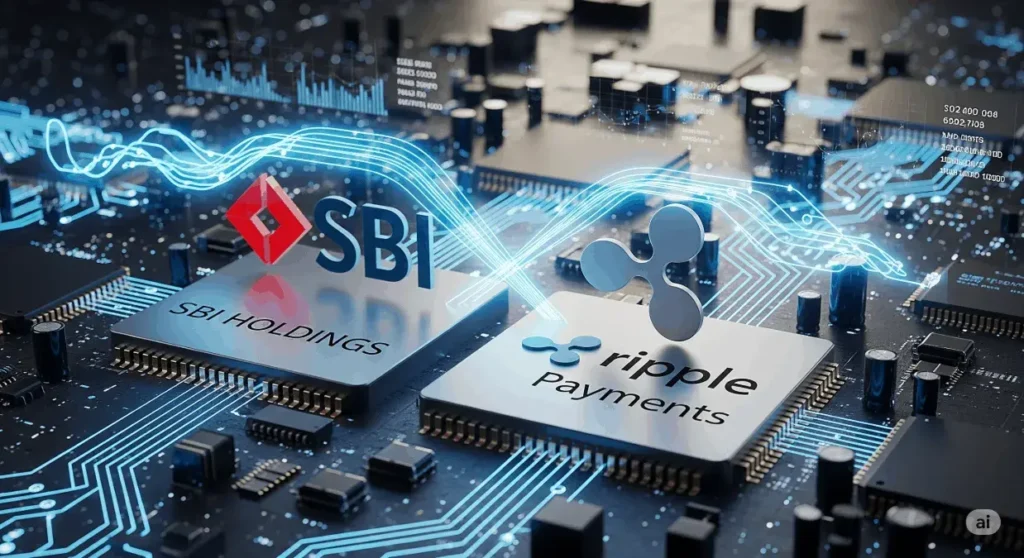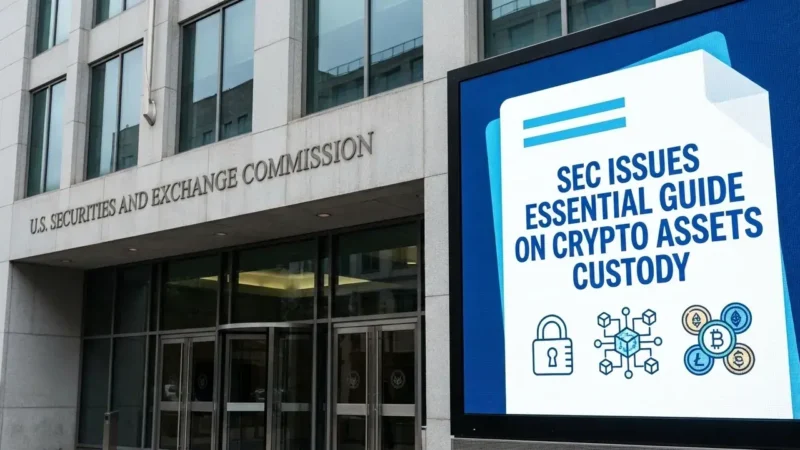SBI Holdings: A Japanese Financial Giant’s Deep Dive into Ripple payments

SBI Holdings, a giant in the Japanese financial services industry, has long set the pace of innovation. While many traditional financial companies have been wary of the rise of digital assets, SBI has been an active and aggressive pioneer. With a portfolio spanning banking, asset management, fintech, and venture capital, the company has seamlessly integrated into the blockchain, cryptocurrency, and Ripple payments ecosystem, creating a critical link between traditional finance and next-generation digital assets.
This unwavering commitment to innovation was recently brought to the forefront following the release of SBI’s latest investor report. Crypto researcher and community figure Wrathof Kahneman meticulously highlighted key updates from the report on X, providing the crypto world with a fresh look at SBI’s strategic moves and its deep-seated relationship with Ripple and XRP. The insights from this report confirm that SBI is not just a participant in the digital asset space; it is a driving force, actively shaping the future of finance both in Japan and on a global scale.
The report’s contents reinforce SBI’s strategic vision and their belief in the transformative potential of blockchain technology. It provides a roadmap for their expansion, touching upon everything from their foundational partnership with Ripple to ambitious plans for new investment products and stablecoins. For the XRP community, in particular, the report is a powerful validation of the ecosystem’s growth, showcasing how a major financial institution is not only adopting but also championing the technology. This article will explore the core takeaways from the SBI report, delving into the significance of each development and what it means for the broader digital asset market. We will examine the impressive adoption of Ripple Payments, the company’s pioneering efforts in launching crypto ETFs, and their ambitious stablecoin strategy, all of which underscore their role as a bridge between the old and new financial worlds.
The Global Reach of Ripple Payments
One of the most significant revelations from the SBI report is the confirmed global adoption of Ripple Payments. The report specifies that more than 100 financial institutions in 55 countries are now actively utilizing this technology. This figure is a critical distinction from the often-cited “300+ partners” that Ripple has globally. As Wrathof Kahneman astutely pointed out, not all of Ripple’s partnerships involve the direct use of Ripple Payments for cross-border transactions. This clarification provides a more accurate and powerful picture of the platform’s utility and real-world application.
The widespread adoption of Ripple Payments is a testament to its efficiency and cost-effectiveness in a market traditionally dominated by slow and expensive legacy systems like SWIFT. By leveraging XRP as a bridge currency, Ripple Payments facilitates near-instantaneous and low-cost settlements, a stark contrast to the multi-day, fee-intensive processes of the past. For SBI, this focus on the platform highlights their confidence in XRP’s core function as a bridge currency and underscores its integral role in their vision for a more streamlined global financial system. The technology has become a cornerstone of global money movement, and SBI’s strong endorsement only solidifies its position in the market. The sheer number of countries and institutions now using Ripple Payments speaks to its scalability and the growing trust among financial players in this innovative solution.
Pushing the Boundaries with New Investment Products
SBI’s vision extends far beyond cross-border payments. The group is poised to introduce a new wave of crypto-asset investment products, pending a crucial regulatory green light from Japan’s Financial Services Agency (FSA). The FSA is currently re-evaluating its regulatory framework for cryptocurrencies, and is even contemplating classifying them as financial instruments. This potential shift could be a game-changer, paving the way for a new era of regulated, institutional-grade crypto investment products in Japan.
Gold + Crypto Hybrid: A Blend of Tradition and Innovation
Among the most innovative ideas put forward by SBI is a Gold + Crypto Hybrid Investment Trust. This product is designed to appeal to both conservative and forward-thinking investors by blending the traditional stability of gold with the growth potential of digital assets. More than half of the portfolio would be allocated to gold ETFs, providing a solid foundation of value. The remaining portion, up to 49%, would offer exposure to digital innovation through a carefully selected basket of crypto ETFs, including Bitcoin. This hybrid model is a shrewd move, offering a balanced approach that could attract a broad spectrum of investors who are interested in crypto but are hesitant about the volatility of a pure digital asset fund.
The Dedicated Crypto ETF: A New Door for Mainstream Investors
Another key initiative is a dedicated crypto ETF that SBI plans to list directly on the Tokyo Stock Exchange. This product would feature a mix of top digital assets, including both Bitcoin and XRP. If approved, this would be a groundbreaking development in Japan’s financial market. It would be one of the first regulated ETF products in the country to include XRP, opening up an entirely new avenue for mainstream investors to gain exposure to the token. This move would significantly enhance XRP’s accessibility and liquidity, potentially attracting a new wave of capital into the ecosystem. The inclusion of XRP alongside Bitcoin in a regulated ETF signals a high level of institutional trust in its long-term viability and utility. This is a monumental step for the asset and could set a precedent for other regulated markets around the world.
A Strategic Play with Stablecoins
SBI’s strategic foresight is also evident in its stablecoin plans. The company is not only working on launching two of its own stablecoins—one backed by the U.S. dollar and another by the Japanese yen—but is also expanding its partnerships in this space. These stablecoins are being developed with a clear purpose: to support a wide range of financial activities, from cross-border settlements and institutional trading to B2B financial infrastructure. This is a far more sophisticated approach than simply creating a digital currency; it’s about building the foundational layers of a new financial ecosystem.
In a further sign of its global ambitions, SBI is actively working to expand the use of USDC in Japan through its joint venture with Circle. This partnership aims to bring reliable, USD-backed liquidity to the Japanese financial ecosystem, strengthening the connections between Japan and U.S. markets. Additionally, SBI has plans to handle RLUSD, Ripple’s own USD-backed stablecoin, within the year. Ripple’s stablecoin currently holds a market cap of around $602 million, making it a significant player in the stablecoin space. By integrating RLUSD, SBI further solidifies its partnership with Ripple and positions itself at the forefront of the stablecoin market in Asia. These moves demonstrate a comprehensive and multi-pronged strategy to dominate the stablecoin market, leveraging both their own products and strategic alliances to create a robust and interconnected financial network.
The combination of new investment products, the growing use of Ripple Payments, and the ambitious stablecoin strategy paints a picture of a company fully committed to the digital asset revolution. SBI is not just dabbling in crypto; it is building a comprehensive and integrated ecosystem that spans payments, investments, and institutional infrastructure. This holistic approach sets it apart from many of its peers and positions it as a leader in the global transition to digital finance. The company’s actions are a powerful signal to the market that digital assets are no longer a fringe curiosity but a core component of the future financial system.
Stay informed, read the latest crypto news in real time!
SBI’s strategy is a powerful case study in how traditional financial institutions can successfully bridge the gap between legacy systems and the new world of decentralized finance. Their early bet on blockchain technology, particularly their partnership with Ripple, is now paying significant dividends. The confirmed adoption of Ripple Payments by over 100 institutions is just one example of this success. The planned launch of regulated crypto ETFs and stablecoins will further solidify their position as an industry pioneer. As the regulatory environment in Japan becomes more accommodating, SBI is perfectly positioned to capitalize on these changes and lead the charge in bringing digital assets into the mainstream. The company’s vision for a future where traditional finance and blockchain technology coexist and thrive is becoming a reality, one strategic move at a time. The world is watching as this Japanese financial giant continues to build a new financial infrastructure powered by digital assets and the efficiencies of Ripple Payments.




